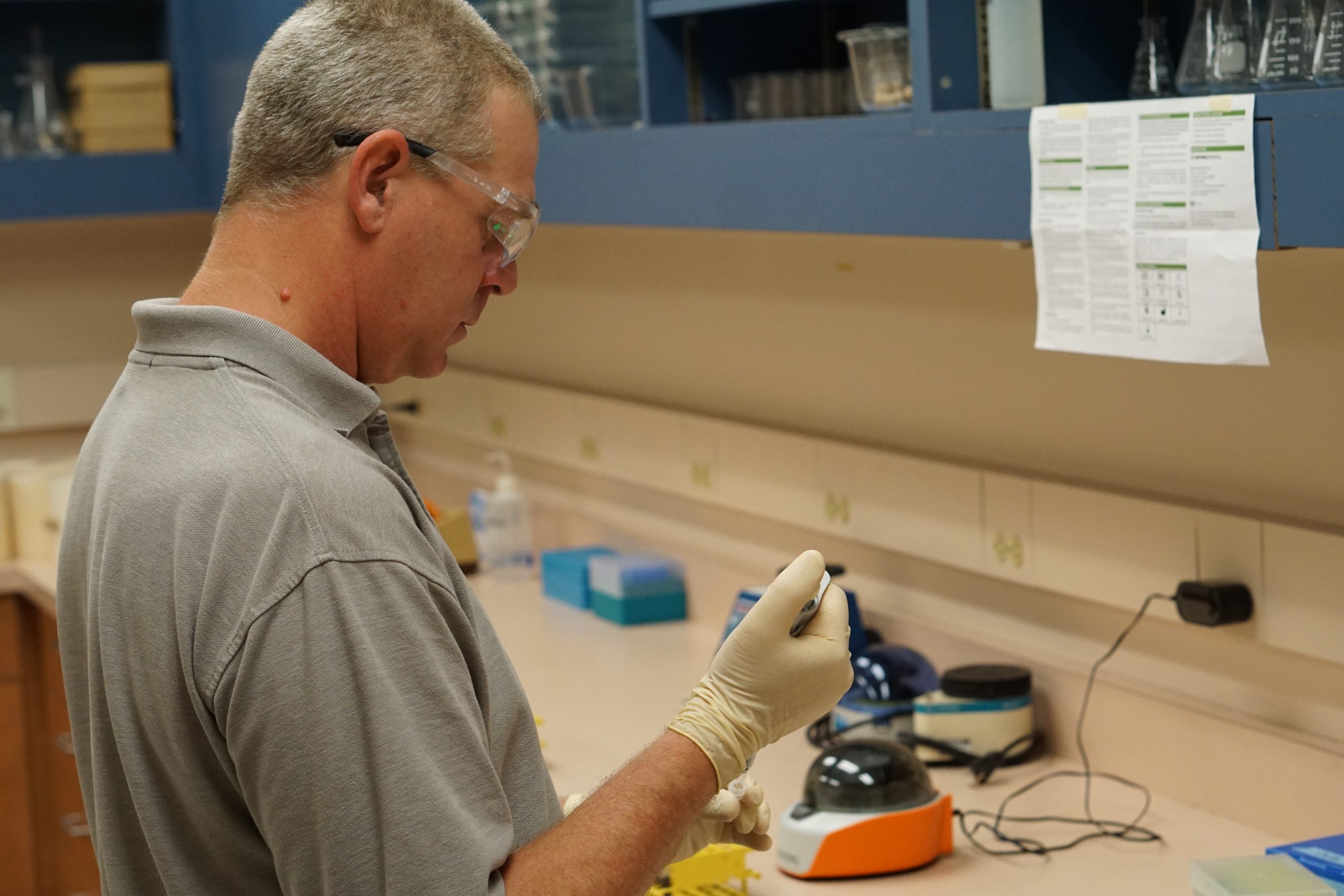
NMCAW: Lab Inspectors Koudai Sugii and Cassie Bowen
June 26, 2020
KARE 11 – Average year so far for mosquitoes, but that could change after the rain this week
July 24, 2020
Kirk Johnson, MMCD Vector Ecologist, preparing mosquito samples for testing.
The deadliest animal on the planet is not a shark, a lion, or even a snake. It's a much smaller creature that we find right in our own backyards - the mosquito.
Some mosquitoes are vectors, which means they can carry pathogens that lead to diseases that can be harmful to humans and other animals like birds, horses, and dogs. Every year across the globe millions of people are sickened by mosquito-borne illnesses and more than 725,000 are killed. Dengue fever, malaria, Zika, and yellow fever are some of the more common diseases in warm climates. Mosquito-borne diseases regularly diagnosed in Minnesota are caused by West Nile virus, La Crosse encephalitis, and Jamestown Canyon virus.
As a public health agency, protecting the public from diseases spread by mosquitoes is a critical part of the Metropolitan Mosquito Control District mission. Kirk Johnson is the vector ecologist at MMCD and he manages our program to find and reduce the species of mosquitoes that are likely to carry disease. In Minnesota, the most common mosquito-borne disease is caused by West Nile virus with anywhere from 2 to over 100 human cases reported to the Minnesota Department of Health each year. Kirk and his team track West Nile virus by identifying species that are potential vectors, testing samples for presence of the virus, and recommending treatment in areas where it is found.
Below is a quick look at how we test for West Nile virus. (Click on images to enlarge.)
STEP 1: Collect Adult Mosquitoes
On Monday nights throughout the spring and summer, MMCD staff place around 170 traps throughout the district to collect adult mosquitoes. Carbon dioxide baited light traps release a small amount of carbon dioxide that attracts mosquitoes who then get propelled into a net with a fan. Gravid traps capture some of the primary West Nile virus vectors when female mosquitoes fly in to deposit eggs. Traps are collected by the field crews on Tuesday morning and brought to the lab for identification.
STEP 2: Identify Mosquito Species
In St. Paul our entomologists Diann, Scott, and Carey with the help of a team of seasonal lab inspectors identify the mosquito species that are brought in from the field and separate potential disease vectors. The mosquitoes of concern in the transmission of West Nile virus are from the genus Culex, which in our region of Minnesota are mainly Culex pipiens, Culex restuans, and Culex tarsalis. When these species are found, they are separated by the trap location and frozen as they are handed over to Kirk and his team.
STEP 3: Prepare the Sample
Before running the test to find out whether mosquitoes contain West Nile virus, the samples need to be prepared. The frozen mosquitoes are placed in vials with a buffer solution and two ball bearings and then ground up.
The ground up mosquitoes are then placed in a centrifuge and then about 120 microliters are extracted and put into a smaller vial.
STEP 4: Run the RAMP Test
The test that MMCD uses for West Nile virus is called the RAMP test. The sample is mixed with a solution provided in the RAMP test kit and then transferred to a cartridge. After sitting for about 1.5 hours the cartridge is placed in the RAMP reader. The reader takes a few minutes to analyze each sample and then outputs a result indicating whether West Nile virus is present in the sample.
See a video of the RAMP reader in action.
STEP 5: Analyze Results and Decide Action Steps
The RAMP reader will return a number that indicates whether one or more mosquitoes in the sample were carrying West Nile virus. As soon as tests are complete, Kirk reports the results to MMCD staff, the Minnesota Department of Health and the U.S. Centers for Disease Control and Prevention. Based on the location of a positive test and results from other surveillance, Kirk may recommend additional mosquito control treatments.
This important work helps keep District residents safe from mosquito-borne disease and is a critical part of our Integrated Pest Management program.
West Nile virus in Minnesota for 2020
As of July 1st, 2020 we have tested 121 pools of mosquitoes for West Nile virus and all have come back negative. There have been no human cases reported to the Minnesota Department of Health this year.
To learn more about West Nile virus and the Metropolitan Mosquito Control District, view our F.A.Q.









